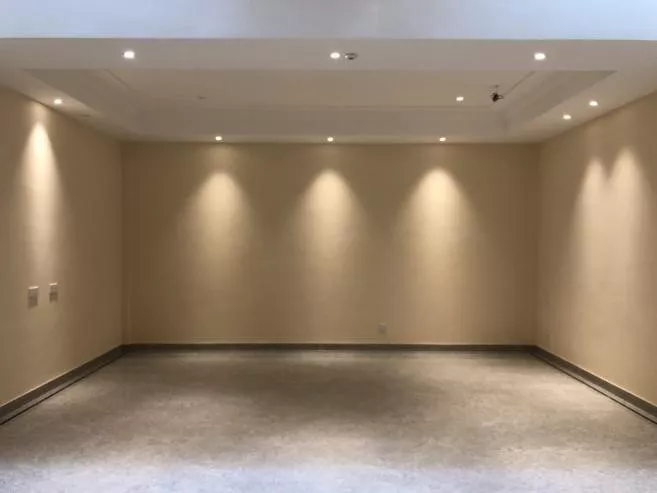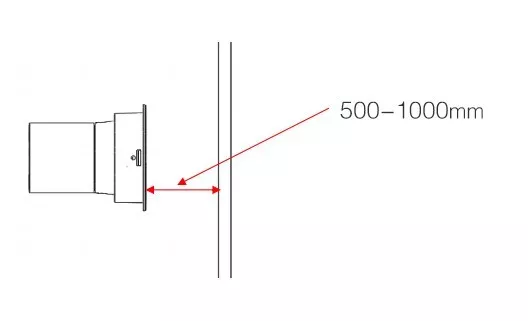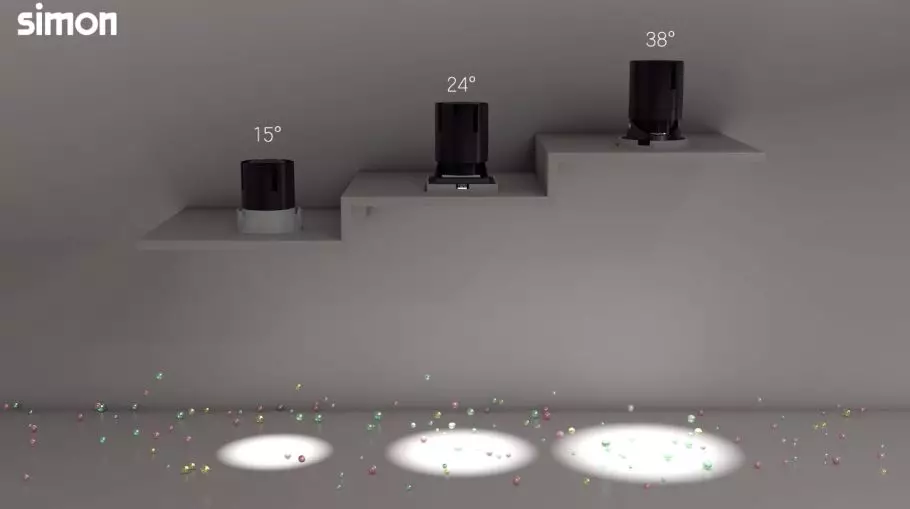 中文
中文
These years, the design without a master light has become a trend of home decoration. Rich downlight/spot light, light strip, and strip light, etc. may divide a space in a soft manner and add the lighting levels of a house. A combination of different light sources may be used to create diversified scenarios.
A sound home decoration light source shall have the following features: free of strobe flash, anti-glare, high CRI, etc., and have such spot light with a good flare shape for key lighting. The exhibition of the items under lighting is essential. Then how to evaluate whether the flare of the spot light is excellent? Invite Simon’s experienced R&D engineer to tell you!

I Simon Project – Nanjing Yanlord Phoenix Villa (All rights reserved. Do not Reproduce. Any copyright infringement is subject to investigation.)
Before exploring the spot light flare, we need to clarify some questions:
1. What is spot light flare?
2. What metrics are used to measure spot light flare?
3. Which methods are used to assess flare?
01
First of all, let’s check what spot light flare is.
The spot light flare is the light shape of the spot lighting projected on the surface.
For such LED spot light projecting the functionality, the quality of the light source is especially important. As the light is embedded in the ceiling or wall, the flare is the most representative “appearance” demonstration of the spot light, and is also one of the standards used to determine the luminescence quality of a light.

I Simon Project – Nanjing Yanlord Phoenix Villa (All rights reserved. Do not Reproduce. Any copyright infringement is subject to investigation.)
02
Then, as one of the standards used to determine the quality of light source of a spot light, what features does a high-quality flare have?
The optic details of a high-quality spot light is particular, and the reflector has a uniform light distribution, so the presented flare is natural and comfortable. The exposure intensity of the light is gradually virtualized outwards, and the peripheral lighting is naturally diffused, with clear lighting and free of miscellaneous shades and dark spots.
Conversely, the reflector with uneven light distribution has a lower light efficacy availability. The presented flare has dark spots and areas, with rigid halo transition and glare, and also with miscellaneous shades and virtual shades (obvious sub-flares). To sum up, a good flare shall have the following features:
①There are no marks similar to tires at the edge of the flare;
② There should be no yellow spots in the middle or at the edge;
③The flare is regular in shape and good looking ;
④ The halo fainting from the center to the edge of the flare shall be transitioned naturally.

I Simon Project (All rights reserved. Do not Reproduce. Any copyright infringement is subject to investigation.)
03
After clarifying the first two questions, now we recommend some methods for assessing the spot light flare.
The following assessment methods are applicable for spot lights (with regular light beam angles of 12°,15°,24°, and 36°);
1. Observe the effects of the flares in two directions – vertical lighting and side lighting;
2. Assess whether the flare space demand is dark room or such space with a lower brightness, or white wall, detailed below:
Vertical lighting
The illumination surface of the light is paralleled with the wall, about 500mm--1000mm from the wall surface (as shown in Fig. A). If the flare is even in color, and there are no colored flares; the light shape is regular and good looking, and the halo is transitioned naturally; the illumination intensity of the main flare is even (with the beam angle between 50% and 100%); and the sub-flare fainting is smooth (with the beam angle between 1% and 50%), then it indicates that this is the high-quality spot light flare; otherwise, it is determined to be the poor flare.

 图A
图A
Side lighting
The illumination surface of the light is vertical with the wall, with the principal optic axis being 200mm--350mm from the wall surface, and with the head rotary between 0° and 30° (as shown in Fig. B). If the flare is even in color, and there are no colored flares; the halo is transitioned naturally, with fewer edge layers (fewer is better), then it indicates that this is the high-quality flare; otherwise, it is determined to be the poor flare.

